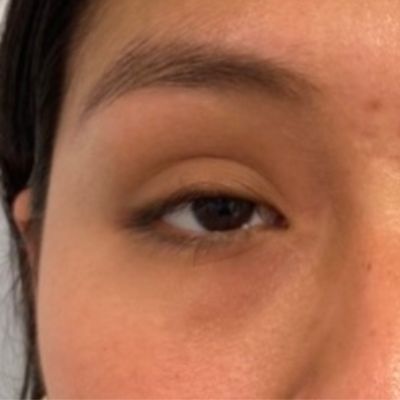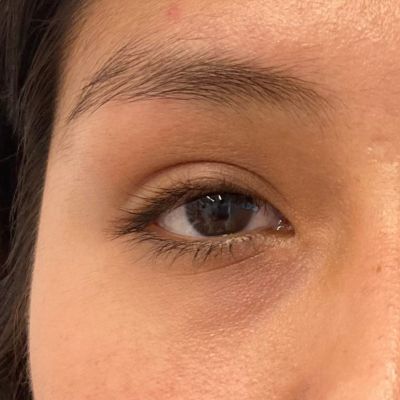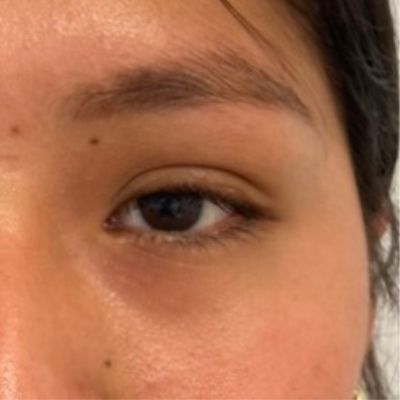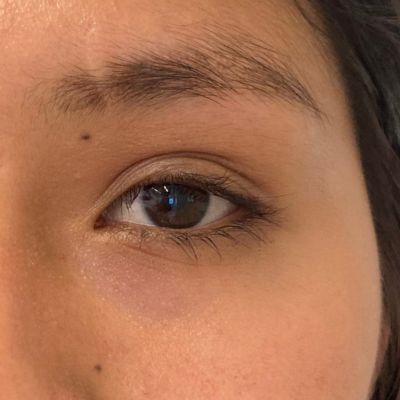Ptosis: Causes, Symptoms and Treatment Options
Ptosis Surgery: Functional and Aesthetic Improvement
Ptosis surgery not only improves the appearance of the face, but also has a significant impact on the quality of life of those who suffer from eyelid drooping, especially when it affects vision. Unlike blepharoplasty, which focuses more on the aesthetic aspect of the eyelid, ptosis surgery corrects a functional problem related to the levator muscle of the eyelid.
If you notice that one or both eyelids are drooping and this is affecting your vision or appearance, we recommend that you consult with an eye surgery specialist, such as Dr. Rob van der Veen, who can perform a detailed evaluation of your case and advise you on the best treatment options.
Everything you need to know about the treatment
- Duración del tratamiento: 1-2 horas
- Recovery: 4 Days
- Visible results: Immediate
- Effects: Immediate
- Anesthesia: Local with or without sedation
- Price: Subject to diagnosis
What is ptosis?
Ptosis is a medical condition in which the upper eyelid droops abnormally, to a greater or lesser degree covering the eye. This drooping of the eyelid can affect one or both eyes and varies in severity from a slight drooping to severe obstruction of vision. Ptosis can occur at any age, although it is more common in older people due to the weakening of the eyelid muscles over time.
Common symptoms of ptosis:
- Drooping upper eyelid.
- Obstruction of vision (in severe cases).
- Need to raise eyebrows to see better.
- Eye fatigue due to the effort to keep the eyes open.
What causes ptosis?
Ptosis occurs when the upper eyelid cannot be held in its natural position due to a weakness or disinsertion of the muscle that controls it. These are the main causes of eyelid ptosis:
The levator muscle, responsible for lifting the eyelid, can weaken over time, especially due to aging or wearing contact lenses. This wear prevents the eyelid from staying in place, causing it to droop.
The tendon that connects the levator muscle to the edge of the eyelid can become detached or stretched, especially from previous surgeries or prolonged contact lens wear. This reduces the muscle’s ability to lift the eyelid.
The congenital ptosis occurs when one is born with insufficient or defective development of the levator muscle of the eyelid. In these cases, the muscle does not form properly, causing the eyelid to remain droopy from birth. It can affect one or both eyes and in some cases is associated with other eye problems, such as strabismus. It is important to correct it in childhood to avoid visual development problems, since the drooping eyelid can block vision, affecting the development of vision, known as amblyopia or “lazy eye”.
Diseases such as myasthenia gravis or oculopharyngeal muscular dystrophy(OPMD) can also cause eyelid drooping.
A blow or trauma to the eye area, as well as previous eye surgeries, can affect the structure of the eyelid, weakening the muscles or tendons that keep it elevated.
In some cases, extra weight due to excess skin (dermatochalasis) or the presence of tumors in the upper eyelid may cause it to droop, which is known as mechanical ptosis.
Difference between ptosis surgery and blepharoplasty
It is essential to differentiate ptosis from dermatochalasis (an excess of skin for blepharoplasty to be performed). Although both affect the upper eyelid, they have different causes and treatments and it is important to visit an eyelid specialist (oculoplastic surgeon) when considering one of these procedures.
Ptosis surgery is specifically aimed at correcting the position of the upper eyelid that has drooped due to a problem in the levator muscle. In this procedure, the surgeon adjusts or strengthens the levator muscle of the eyelid in order to restore its function and lift the eyelid to a more natural position, and in many cases correct vision problems.
Blepharoplasty, on the other hand, is more focused on aesthetics. Mainly used to remove excess skin or fat in the upper or lower eyelids, to improve the overall appearance of the eyes.
Is it possible to combine the two surgeries?
It is quite common for a patient to need both ptosis surgery and blepharoplasty. at the same time, especially in older people who show signs of both eyelid drooping and excess skin, who wish to improve both functionality and aesthetic appearance. Although they are different procedures, they can be combined in the same surgical intervention achieving more complete, natural and harmonious results.
Who is a candidate for ptosis surgery?
Ptosis surgery is performed primarily because of its significant functional impact, people who may need this surgery include:
- People with impaired vision: When drooping of the upper eyelid interferes with the visual field.
- Patients with congenital ptosis: People born with a drooping eyelid due to abnormal levator muscle development may require surgery at an early age to avoid problems in visual development.
- Older people: As we age, the levator muscle weakens, causing the eyelid to droop, affecting both function and aesthetics.
- Pacientes con problemas neurológicos: Algunas afecciones médicas que afectan a los nervios que controlan el párpado pueden causar ptosis.
At Turó Park Aesthetic, we are committed to your well-being before, during, and after the procedure, ensuring professionalism not only in the treatment but also on the road to recovery.
Dra. Madeleine Smit - CEO
Before and after treatment






Meet our multilingual doctors
Meet our team of multilingual specialists, composed of leaders in aesthetic medicine and surgery. Our doctors, who speak English, French, Dutch, Spanish, and Catalan, are dedicated to providing you with personalized, high-quality care.
Ptosis surgery step by step
Ptosis surgery is a specialized procedure that varies depending on the cause and severity of the condition. Here is a step-by-step explanation of the surgery:
In the initial consultation, the oculoplastic surgeon will evaluate your case and determine if you are a good candidate for surgery. He or she will also explain the procedure, risks and possible results.
Ptosis surgery is usually performed under local anesthesia but depending on the patient’s preference it can also be performed under sedation or in the case of children, under general anesthesia. The technique depends very much on the type of ptosis and the patient’s preference. It can be performed with a small incision in the natural crease of the upper eyelid, or it can be performed from the inside of the eyelid, without skin incision. Dr. van der Veen, our oculoplastic surgeon, also practices the correction of eyelid ptosis without sutures.
It is normal to experience some swelling and bruising around the eyes, but these symptoms disappear with time. Antibiotic ointment should be applied for one week. In addition, it is recommended to avoid high intensity activities for 1-2 weeks and follow the surgeon’s instructions for optimal recovery.
Our specialists are just a click away. Schedule your initial consultation and receive a treatment plan tailored specifically for you.
What do our patients say?
Madeleine is a highly qualified dentist and orthodontist who provided exemplary care for our entire family. She has a great bedside manner and put my children at ease. She has built a fantastic medical “home” in Barcelona for expat families.
Amy H.
I am delighted with the orthodontic treatment with lingual braces performed by Dr. Madeleine Smit, both the evolution in just 2 months and the treatment received. Highly recommended.
Arcadi A.
Jaime Guinovart is an amazing dentist. After an accident I damaged my front teeth when I was young. I have seen so many dentists in the last two years that I have built up a lot of fear. Jaime helped me with so much patience that my fear is completely gone. And the result of the cosmetic changes are super natural and perfect! Thank you Jaime.
Caroline K.
Dr. Rob Van der Veen is a perfectionist, meticulous in his work and a great professional. His manner is excellent, he inspires security and tranquility. He is observant, kind and takes his work very seriously. I am very satisfied and happy with the results of the operation. Thank you very much!
Marie
I was worried about my hair loss and because I have long hair, it frizzes a lot. Dr. Fajardo solved my doubts and gave me hair mesotherapy treatment, I have noticed how my hair has improved a lot in just two sessions. I recommend it 100%.
Camille B.
Excellent experience with Dr. Daniela, very kind and professional. I clarified several doubts and she gave me a lot of peace of mind.
Gustavo A.
For those who have suffered from hair problems, I highly recommend Dr.Daniela. She is the best, kind and friendly doctor! Im just under 5 months of my hair treatment I am doing growth factors and Mesotherapy as she advises and at this moment I can see the big difference, my hair started to grow back!
Joseph B.
Unbeatable experience with Dr. Daniela. Her treatment is spectacular, she is very interested in her patients, very close. The center is impressive, it is very nice. To conclude I can not recommend anyone better.
Pd: hair PRP with her does not hurt at all, it gave me a tingling sensation.
Daniela L.
Very attentive, very friendly and always available for any questions I might have. Service of 10 and treatment of 10. Nothing to say.
Ariadna G.
I went to the medical center seeking to attenuate the spots on my face caused by the sun and the passage of time. There I received advice and attention from Dr. Maria Carrera, who recommended a series of facial laser treatments to eliminate the spots. After the first session, the results were really remarkable, being very satisfied with the final process. I will certainly continue to work with Dr. Carrera, since I feel that the treatment received has been really sincere and professional. After my recent experience, I highly recommend her services and that you consult her for any aspect that concerns you.
Charo B.
Frequently asked questions about ptosis
Not the sharpness of vision. But the visual field, yes, especially when the drooping of the upper eyelid partially or completely blocks the pupil. When the eyelid is raised to its normal position, peripheral and upper vision is restored.
The Ptosis is a condition that affects the levator muscle of the eyelid, causing the upper eyelid to droop. Surgery corrects this muscle problem. In contrast, the blepharoplasty is a cosmetic surgery that removes excess skin and fat from the eyelids, without affecting the levator muscle.
It is quite common for a patient to need both ptosis surgery and blepharoplasty. at the same time. Although they are different procedures, they can be combined in the same surgical intervention to obtain more complete and harmonious results.
The results of ptosis surgery are usually visible immediately, although swelling may obscure the final result for the first few weeks.
Most patients can resume light daily activities after 1 week. However, complete recovery, including the disappearance of the swelling in its entirety, may take 2 to 6 weeks.